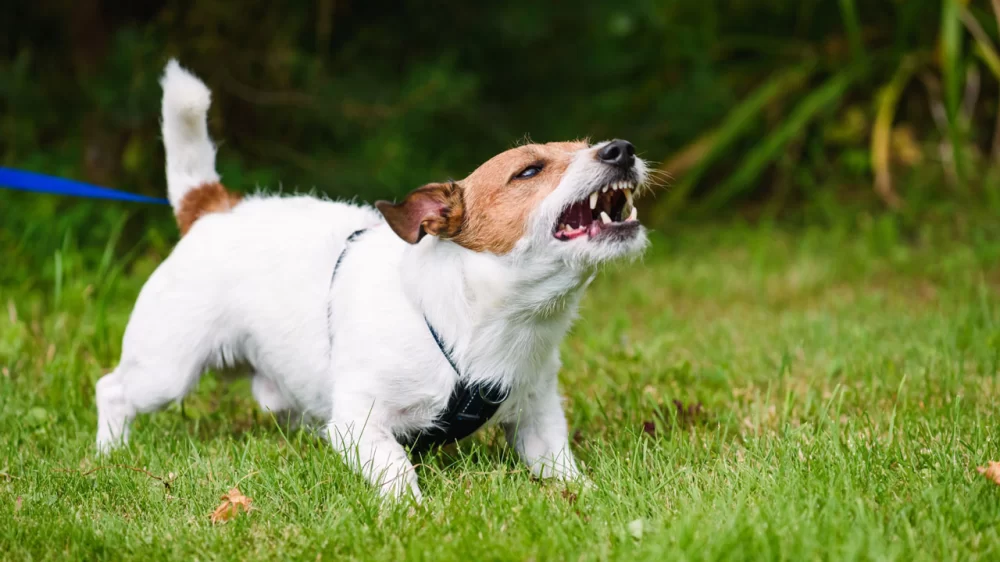Understanding Why Dogs Bark at Strangers
When I first adopted my dog, Daisy, she was the sweetest little thing. But there was one behavior that quickly became a challenge: every time a stranger walked by or knocked on the door, she’d start barking incessantly. It wasn’t aggressive barking, but it was loud and persistent, and it made my guests feel uncomfortable. After a lot of research and trial and error, I learned that dogs bark at strangers for a variety of reasons. Some dogs are protective, others are just anxious, and some may even feel threatened by unfamiliar faces. Understanding why your dog barks at strangers is the first step in addressing the issue.

1946 S Christopher Columbus Blvd, Philadelphia, PA 19148, USA
See Details1. Why Does My Dog Bark at Strangers?
The first time Daisy barked at a stranger, I was taken aback. I thought she was being rude, but then I realized it was more about her protective instincts. Dogs are territorial creatures, and many will bark when they sense something unfamiliar approaching. In Daisy’s case, she was nervous about new people entering her space, and this anxiety caused her to react vocally. Other common reasons why dogs bark at strangers include:
- Protective Instincts: Dogs are naturally inclined to protect their territory and their people. For some dogs, the presence of a stranger signals a potential threat, triggering a defensive bark.
- Anxiety: Dogs that are fearful or anxious about unfamiliar people may bark as a way of expressing discomfort or fear.
- Excitement: Some dogs bark at strangers simply because they are excited to meet new people. They may not know how to channel their energy and end up barking uncontrollably.
- Lack of Socialization: If a dog hasn’t been exposed to many different people during their early development, they may become more fearful or reactive when encountering strangers.
2. Setting Up a Training Plan
Once I understood why Daisy was barking at strangers, I began developing a training plan to address her behavior. I knew that changing her response to strangers would take time and patience. Here’s what I did:
- Step 1: Desensitize Your Dog to Strangers: The first step in training is to desensitize your dog to the presence of strangers. I started by having a friend stand outside the house while Daisy was inside. Every time Daisy saw the stranger, I rewarded her for calm behavior with a treat. This helped her associate the presence of strangers with positive experiences.
- Step 2: Teach the “Quiet” Command: I taught Daisy the “quiet” command by saying it when she started barking. The moment she stopped barking, I would reward her. This process involved a lot of patience, but over time she began to understand that being quiet was what earned her a treat.
- Step 3: Gradual Exposure: Gradual exposure to strangers is key in reducing your dog’s anxiety or fear. I slowly introduced Daisy to more people, starting with a few friends and gradually working up to larger groups. I kept the interactions positive, rewarding her for calm behavior and discouraging barking.
3. Positive Reinforcement and Rewards
Positive reinforcement became a critical tool in my efforts to stop Daisy from barking at strangers. Instead of punishing her for barking, I focused on rewarding her for calm behavior. I used treats, praise, and affection to reinforce the behavior I wanted to see. Here’s how I did it:
- Timing Matters: I made sure to reward Daisy immediately after she stopped barking. Timing is crucial in dog training – the closer the reward is to the behavior, the easier it is for your dog to understand what they’re being rewarded for.
- Consistency: Every time a stranger came to the door, I used the same approach. Consistency in your training is important, as it helps your dog learn that the same behavior always results in the same outcome.
- Use High-Value Treats: I learned that Daisy responded better to high-value treats – those special snacks she loved more than her regular food. This helped keep her focused during training sessions.
4. Managing Setbacks in Training
No training process is without its setbacks, and Daisy’s journey was no exception. There were times when she would still bark at strangers, even after weeks of consistent training. However, I learned to approach these setbacks calmly. Dogs often regress, especially if they’re stressed or overwhelmed. If you encounter a setback, here are some tips:
- Stay Calm and Patient: Frustration can hinder your training efforts. I reminded myself that Daisy wasn’t misbehaving on purpose – she was simply acting out of fear or excitement. Staying calm and patient made a huge difference in the effectiveness of our sessions.
- Increase the Difficulty Gradually: If Daisy was reacting too strongly to a stranger, I would take a step back and start with less challenging scenarios. For example, I might have a friend stand farther away before coming closer.
- Seek Professional Help: If you’re not making progress, don’t hesitate to reach out to a professional dog trainer. They can offer new insights and techniques to help address specific behavioral issues.
5. Building Your Dog’s Confidence
Confidence-building exercises played a big role in Daisy’s progress. Fearful dogs often bark at strangers because they’re uncertain or scared. By boosting Daisy’s confidence, I was able to reduce her reactive barking. Some of the techniques I used included:
- Positive Associations: I made sure to pair each interaction with a positive experience. After every calm encounter with a stranger, Daisy got a treat or affection, which helped her build trust in new people.
- Encourage Calmness: When Daisy was calm and didn’t bark, I made sure to praise her immediately. This reinforced the behavior I wanted to see, helping her become more relaxed around strangers.
- Socialization Opportunities: I also exposed Daisy to a variety of environments and people, which helped her become more comfortable in different situations. This could include taking her to dog parks, visiting friends, or simply walking around the neighborhood.
6. Preventing Future Barking at Strangers
Once Daisy learned how to manage her barking around strangers, I focused on maintaining the behavior long-term. It’s important to continue practicing regularly, even after your dog has learned not to bark at new people. Here are a few strategies to maintain progress:
- Regular Training Sessions: I kept practicing training techniques daily to ensure Daisy stayed calm when strangers were around.
- Reinforce Positive Behavior: Every time Daisy greeted a new person without barking, I would reward her. This helped reinforce her calm response.
- Be Consistent: Consistency is key. Even after Daisy stopped barking at strangers, I continued to reward her for calm behavior around new people.










